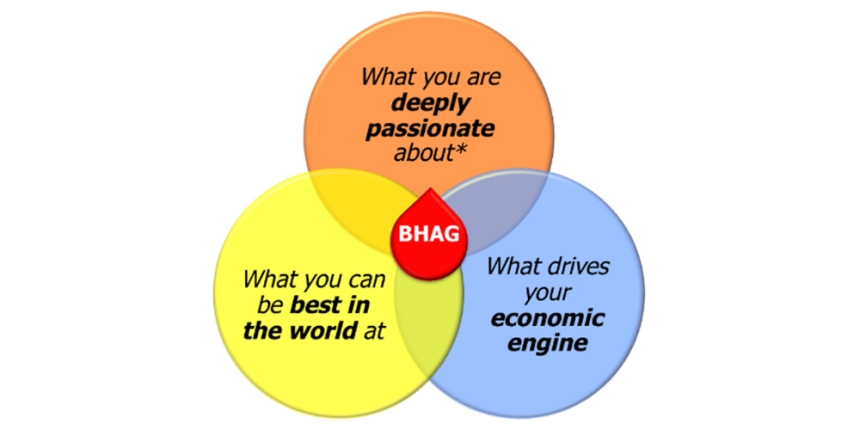Scaling Up: Mastering the Four Pillars for Explosive Business Growth
Scaling Up: Mastering the Four Pillars for Explosive Business Growth
Being a founder and entrepreneur in a fast growing company comes with many exciting business challenges. One of them is operating in an environment characterized by high uncertainty and constantly having to deal with growing pains. Do you feel like it’s hard to keep track of who’s doing what in your company? Are you having a hard time figuring out what you are selling to whom and which opportunities to turn down? Maybe you feel you no longer have the right people in the right place at the right time?
Successfully scaling your SaaS business is indeed quite an endeavor. You go through various growth phases, each with its own challenges and risks. Most companies stay as small organizations or “mice”. A few, however, grow into “gazelles”, breaching the $1 million barrier and scaling up to $10 million, $100 million, and even $1 billion.
The above is what Aaron Ross – a SaaS veteran in the early days of Salesforce – famously coined the phase of “hot coals” in his book “Predictable Revenue”. “Shifting from organic growth to proactive growth requires new habits, practices and systems, causing a lot of delay and frustrations."
The Scaling Up blueprint helps entrepreneurs and business leaders grow their companies beyond the startup phase. It focuses on people, strategy, execution, and cash, emphasizing attracting the right people, having a clear strategy, fostering accountability, and managing cash flow effectively. By following the blueprint, businesses can achieve sustainable growth and thrive over 2-3 years.
For the gazelles to continue to survive and scale up further (and shorten phase B in the above chart), they rely on solid processes and follow good habits in order to avoid the pitfalls and usual mistakes of every rapidly growing company. The Scaling Up blueprint from Verne Harnish provides a comprehensive framework for entrepreneurs and business leaders who want to grow their businesses beyond the startup phase, based on proven strategies and best practices. It supports them in overcoming the challenges of growth and achieving full potential, while creating a culture of excellence and continuous improvement.
The ScaleUp blueprint provides the following benefits:
- Clearer focus: it helps businesses clarify their vision, mission, and values, and establish a clear focus on their core priorities. This helps businesses prioritize and allocate resources effectively and avoid distractions that can slow down progress.
- Improved execution: it provides a set of tools and strategies to help businesses improve their execution and achieve their goals. This includes developing effective strategies, establishing metrics and dashboards, and building a strong execution team.
- Increased profitability: it helps businesses identify and capture opportunities for growth and profitability. By improving operational efficiency, reducing costs, and increasing revenue, businesses can achieve sustainable growth and profitability.
- Better decision-making: it provides a structured approach to decision-making, based on data and analysis. This helps businesses make more informed decisions and avoid costly mistakes.
- Enhanced culture: it emphasizes the importance of building a strong and positive culture, based on trust, accountability, and continuous learning. This helps businesses attract and retain top talent and create a more engaged and productive workforce.
The key pillars to scale up your business according to the blueprint are (1) attracting and retaining the right people, (2) creating a truly differentiated strategy, (3) directing flawless execution, and (4) generating cash to fuel your growth. Underlying these pillars are the famous Rockefeller Habits which are ten fundamental habits that support successful execution of a strategy.
The first pillar, People, focusses on the importance of building a differentiating team. Ensure that the stakeholders (employees, customers, shareholders) are inspired and engaged in the business and that the “right people doing the right things right” inside the organization. In other words: you need to find your own way to unleash the power of your team. As a business leader, one of your most important tasks is to attract and retain A-players, who are the top performers in their respective fields. Develop an “always-hiring” mindset. Use data-driven hiring practices, such as behavioral assessments, to ensure that new hires are a good fit for the company culture and have the necessary skills to succeed in their roles.
The second pillar, Strategy, focusses on the importance and the need for a clear and focused vision for the business. Can you state your firm’s strategy simply — and is it driving sustainable growth in revenue and gross margins? The business should develop a One-Page-Strategic-Plan (OPSP) that outlines their core values, purpose, BHAGs (Big Hairy Audacious Goals), sandbox, core customer, brand promises and key metrics.
Think about strategy in terms of two distinct activities: strategic thinking and execution planning. Strategic thinking is focused on discussing the strategic priorities that enable the organization to reach their BHAG. Execution planning is focusing on implementing the broader strategy: setting specific annual and quarterly priorities, outcomes, and KPIs. Add in both disciplined action and active learning activities and you have a simple Think, Plan, Act, Learn cycle of strategic planning.
The third pillar, Execution, emphasizes the importance of creating a culture of accountability and ensuring that the business is able to execute on its strategy. It is recommended to establish an effective rhythm of daily, weekly, monthly, quarterly, and annual meetings to ensure that everyone in the organization is aligned and focused on achieving the company's goals. The blueprint is also using a process called "OKRs" (Objectives and Key Results) to set and track progress each quarter toward specific goals and KPI (Key Performance Indicators) to monitor the ongoing business performance. The Rockefeller Habits checklist supports the successful execution of your strategy. It is a simple checklist of 10 key habits created by Verne Harnish that are essential for scaling up a business. Spoiler alert, one of them is: “all employees can answer quantitatively whether they had a good day or week”.
The fourth and final pillar, Cash, emphasizes the importance of managing cash flow effectively to fuel the business's growth. Especially in a day and age where capital is no longer available for free, the businesses should focus on increasing profitability, reducing expenses, and improving cash flow by using metrics such as “EBITDA” (Earnings Before Interest, Taxes, Depreciation, and Amortization) and “cash conversion cycle” to monitor financial performance.
Many growth company leaders pay more attention to revenue and profit than they do to cash when it comes to structuring deals with suppliers, customers, employees, or investors/ banks. And when they receive their monthly financial statements, the cash flow statement is either non-existent or ignored. In the words of SaaS CFO Aarish Shah: “Cash flow, balance sheet, P&L. In that order.” The quickest action you can take is to have your CFO give you a modified cash flow statement every day detailing the cash that came in during the last 24 hours and the cash that flowed out. This will keep cash top-of-mind and give you a great feel for how cash is flowing through the business.
The Scaling Up blueprint facilitates the establishment of a well-defined future trajectory and a disciplined execution rhythm across an entire organization. As experienced by industry leaders such as Frank van Vliet, an operating partner at Fortino Capital, this methodology primarily emphasizes action over mere ideation, reminding us that without concrete steps, even the most ambitious dreams remain unfulfilled. Essentially, Scaling Up converts dreams into action.
"Scaling up” is not just another book full of corporate management jargon. It is a comprehensive program, a compass to navigate transformation and can be a great blueprint for entrepreneurs and business leaders who are looking to take their businesses to the next level. By focusing on the four pillars of people, strategy, execution, and cash, the blueprint provides a roadmap for achieving sustainable growth and building a thriving business. It typically takes at least 2-3 years for all the tools, techniques and habits to be incorporated and mastered in an organization", says Frank van Vliet. "Don’t try to do everything at once—persevere in taking 1 step at a time to improve 1 area at a time, and you’ll enjoy great payoffs."


